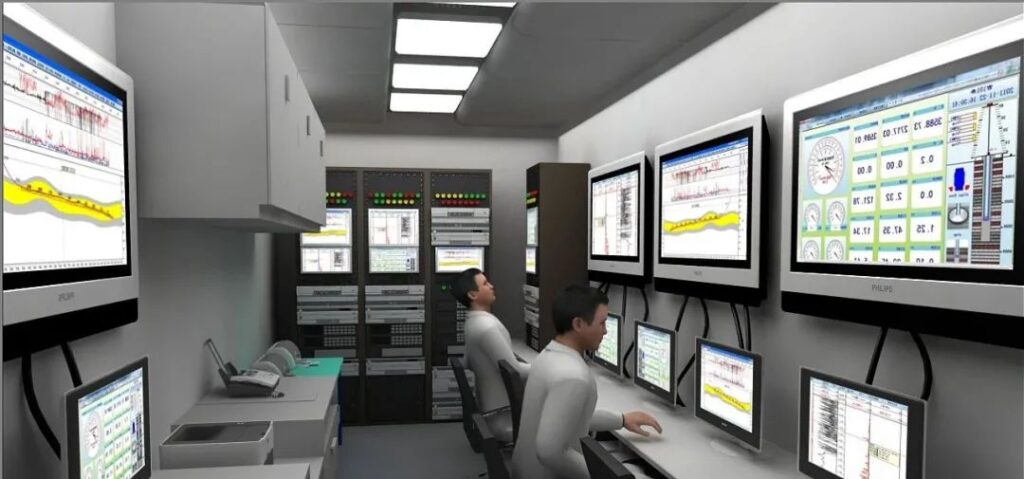Brief Introduction of Geological Logging Method
1. conventional geological logging method
Geological logging – according to the drilling geological design and specifications, collect various geological data and data during the drilling process to judge the formation and oil and gas conditions. The logging methods include: drilling, cuttings, core, fluorescence and drilling fluid logging.
Process: logging preparation – logging – collection of completion data – sorting and submitting of completion data. Logging project content:
Chapter 1: Logging while drilling
Drilling time – the time it takes for the drill bit to break a unit thickness of rock formation. Unit: min/m
Definition – The size of the drilling time is determined by the soft and hard strength of the rock forming the formation, the use of the drill bit and the drilling parameters. The drilling time reflects the lithology characteristics to a certain extent. The recorded drilling time is drawn as a curve, and the drilling time is compared and analyzed. Lithological changes are called logging while drilling.
Bottom entry = effective length of kelly – single length (during normal drilling)
==Well depth – total length of drilling tools (when drilling down or changing drilling tools)
Whole meter square entry == bottom side entry + well depth whole meter difference
Well depth = total length of drilling tool + square entry
Drilling time = drilling time for this meter – drilling time for the whole meter – intermediate drilling time
1) The concept of drilling and logging during drilling
Drilling time refers to the time it takes to drill into the formation with a unit footage, and the unit is min/m.
Logging during drilling is to record the data that changes with depth during drilling. The changes during drilling can qualitatively judge the drillability of the underground rock formation, which in turn can be used to judge the lithology and compare the strata according to the changes during drilling.

2) Logging method while drilling
There are three types of logging methods during drilling: manual recording method, simple timing method and logging instrument during drilling. Among them, the manual recording method is commonly known as the drawing square recording method, which is to manually draw a full meter square entry on the kelly pipe. , the time required to record the distance between the two full-meter square entry lines of pure drilling is the drilling time. The logging instrument can automatically record the drilling data during drilling. The following is a brief introduction to the simple method of recording the drilling time:
Calculation of well depth and square entry
Well depth = total length of drilling tool + square entry (square entry is the length of the kelly below the turntable surface)
The total length of the drilling tool = the length of the drill bit + the length of the joint + the length of the drill collar + the length of the drill pipe
Bottom entry = well depth – total length of drilling tool (when tripping)
= Kelly – single length (during normal drilling)
Whole meter square entry = new single root to bottom entry + difference between the well depth when the previous single root is drilled and the well depth of the adjacent whole meter, or whole meter square entry = whole meter well depth – total length of drilling tool
recording method
After the well depth, bottom entry, and full meter entry are calculated correctly, just record the drilling time from shallow to deep for the whole meter entry according to the interval, and the difference between the two minus the drilling stop time in between is the required unit footage. time – drilling time. The logging on-duty personnel shall timely fill in the contents of the required drilling record format item by item. The logging team leader should report the drilling time 200 meters before the designed well depth to the production management personnel in time for stratigraphic comparison.
3. Drawing and application of drilling curves
1) Drawing of the curve during drilling
The logging team leader should draw the drilling data on the mud logging sketch in the prescribed format in time, and use the back of the transparent square centimeter paper to indicate the depth of the well, in m, with a scale of 1:500, and the horizontal scale to see changes during drilling. The size should be selected reasonably, and the specific drawing method should be implemented in accordance with Q/ZLJ 515–1999 “Regulations on Compilation and Drawing of Field Logging Sketches”.
2) Factors affecting drilling time:
Generally speaking, the size of the drilling time depends on the drillability of the rock. Different rock layers have different degrees of softness and hardness, and the ability to resist the breaking of the drill bit is also different. The dense and hard rock has a large drilling time, and loose and permeable sand, coal, biological Detrital limestone and other drilling hours are small. The influence of drilling parameters is also great, such as WOB, rotational speed, displacement, drilling fluid performance, drilling method and drill bit type. If the WOB is large, the drilling time is small, and the newer the drill bit is, the smaller the drilling time is. For the PDC bits commonly used in drilling, the correlation between drilling changes and lithology lacks regularity. Therefore, mud logging personnel should pay special attention when describing cuttings during reference drilling.
3) Application of drilling curve
The drilling time curve is mainly used for lithology interpretation and stratified naming of cuttings; secondly, it is used for stratigraphic comparison with adjacent wells. Combined with the logging profile, the coring horizon, ancient buried hill interface and complete drilling can be well identified. Drilling horizons; in addition, it can also provide services for drilling engineering calculation of pure drilling time, selection of drill bit type, replacement of drill bit, and pressure prediction.


